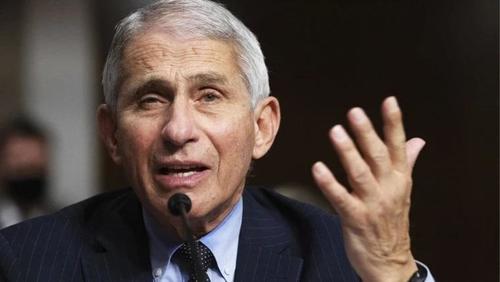As an oil and gas specialist in London 30 years ago, I analyzed models which clearly indicated a breakdown of supply after the year 2020. Here we are today, facing an uncertain future with no clear workable policies. The article below outlines the dilemma most clearly. There will be no free lunch! Energy is complex and requires tradeoffs. Our green energy policies are pulling us straight into a third major energy crisis. We urgently need intelligent and knowledgeable leaders to solve such a difficult conundrum. Where are they?
Authored by David Hay via Everegreen Gavekal blog,
“You
see what is happening in Europe. There is hysteria and some confusion
in the markets. Why?…Some people are speculating on climate change
issues, some people are underestimating some things, some are starting
to cut back on investments in the extractive industries. There needs to
be a smooth transition.”
- Vladimir Putin (someone with whom this author rarely agrees)
“By
a continuing process of inflation, governments can confiscate, secretly
and unobserved, an important part of the wealth of its citizens.”
–
John Maynard Keynes (an interesting observation for all the modern day
Keynesians to consider given their support of current inflationary US
policies, including energy-related)
Introduction
This week’s EVA provides another sneak preview into David Hay’s book-in-process, “Bubble 3.0” discussing what he thinks is the crucial topic of “greenflation.” This
is a term he coined referring to the rising price for metals and
minerals that are essential for solar and wind power, electric cars, and
other renewable technologies.
It also centers on the reality that as
global policymakers have turned against the fossil fuel industry,
energy producers are for the first time in history not responding to
dramatically higher prices by increasing production.
Consequently, there is a difficult tradeoff that arises as the world
pushes harder to combat climate change, driving up energy costs to
painful levels, especially for lower income individuals.
What we are currently seeing in Europe is a vivid example of this dilemma.
While it may be the case that governments welcome higher oil and
natural gas prices to discourage their use, energy consumers are likely
to have a much different reaction.
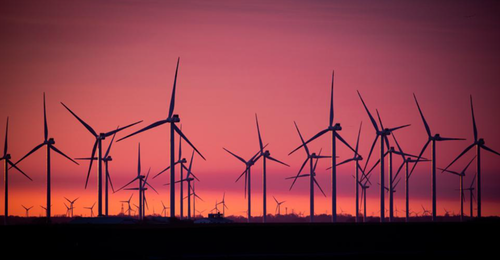
Summary
BlackRock’s
CEO recently admitted that, despite what many are opining, the green
energy transition is nearly certain to be inflationary.
Even
though it’s early in the year, energy prices are already experiencing
unprecedented spikes in Europe and Asia, but most Americans are unaware
of the severity.
To that point, many British residents
being faced with the fact that they may need to ration heat and could be
faced with the chilling reality that lives could be lost if this winter
is as cold as forecasters are predicting.
Because of the
huge increase in energy prices, inflation in the eurozone recently hit a
13-year high, heavily driven by natural gas prices on the Continent
that are the equivalent of $200 oil.
It used to be that
the cure for extreme prices was extreme prices, but these days I’m not
so sure. Oil and gas producers are very wary of making long-term
investments to develop new resources given the hostility to their
industry and shareholder pressure to minimize outlays.
I
expect global supply to peak sometime next year and a major supply
deficit looks inevitable as global demand returns to normal.
In
Norway, almost 2/3 of all new vehicle sales are of the electric variety
(EVs) – a huge increase in just over a decade. Meanwhile, in the US,
it’s only about 2%. Still, given Norway’s penchant for the plug-in auto,
the demand for oil has not declined.
China, despite
being the largest market by far for electric vehicles, is still
projected to consume an enormous and rising amount of oil in the future.
About
70% of China’s electricity is generated by coal, which has major
environmental ramifications in regards to electric vehicles.
Because
of enormous energy demand in China this year, coal prices have
experienced a massive boom. Its usage was up 15% in the first half of
this year, and the Chinese government has instructed power providers to
obtain all baseload energy sources, regardless of cost.
The
massive migration to electric vehicles – and the fact that they use six
times the amount of critical minerals as their gasoline-powered
counterparts –means demand for these precious resources is expected to
skyrocket.
This extreme need for rare minerals, combined with rapid demand growth, is a recipe for a major spike in prices.
Massively
expanding the US electrical grid has several daunting challenges– chief
among them the fact that the American public is extremely reluctant to
have new transmission lines installed in their area.
The
state of California continues to blaze the trail for green energy in
terms of both scope and speed. How the rest of the country responds to
their aggressive take on renewables remains to be seen.
It
appears we are entering a very odd reality: governments are expending
resources they do not have on weakly concentrated energy. And the result
may be very detrimental for today’s modern economy.
If
the trend in energy continues, what looks nearly certain to be the Third
Energy crisis of the last half-century may linger for years.
Green energy: A bubble in unrealistic expectations?
As I have written in past EVAs, it
amazes me how little of the intense inflation debate in 2021 centered
on the inflationary implications of the Green Energy transition.
Perhaps it is because there is a built-in assumption that using more
renewables should lower energy costs since the sun and the wind provide
“free power”.
However, we will soon see that’s not the case, at
least not anytime soon; in fact, it’s my contention that it will likely
be the opposite for years to come and I’ve got some powerful company.
Larry Fink, CEO of BlackRock, a very pro-ESG* organization, is one of
the few members of Wall Street’s elite who admitted this in the summer
of 2021. The story, however, received minimal press coverage and was
quickly forgotten (though, obviously, not be me!).
This
EVA will outline myriad reasons why I think Mr. Fink was telling it like
it is…despite the political heat that could bring down upon him.
First, though, I will avoid any discussion of whether humanity is the
leading cause of global warming. For purposes of this analysis, let’s
make the high-odds assumption that for now a high-speed green energy
transition will continue to occur. (For those who would like a
well-researched and clearly articulated overview of the climate debate, I
highly recommend the book “Unsettled”; it’s by a former top energy
expert and scientist from the Obama administration, Dr. Steven Koonin.)
The
reason I italicized “for now” is that in my view it’s extremely
probable that voters in many Western countries are going to become
highly retaliatory toward energy policies that are already creating
extreme hardship. Even though it’s only early autumn as I write
these words, energy prices are experiencing unprecedented increases in
Europe. Because it’s “over there”, most Americans are only vaguely
aware of the severity of the situation. But the facts are shocking…
Presently,
natural gas is going for $29 per million British Thermal Units (BTUs)
in Europe, a quadruple compared to the same time in 2020, versus “just”
$5 in the US, which is a mere doubling. As a consequence, wholesale
energy cost in Great Britain rose an unheard of 60% even before summer
ended. Reportedly, nine UK energy companies are on the brink of failure
at this time due to their inability to fully pass on the enormous cost
increases. As a result, the British government is reportedly on the
verge of nationalizing some of these entities—supposedly, temporarily—to
prevent them from collapsing. (CNBC reported on Wednesday that UK
natural gas prices are now up 800% this year; in the US, nat gas rose
20% on Tuesday alone, before giving back a bit more than half of that
the next day.)
Serious food shortages are expected after
exorbitant natural gas costs forced most of England’s commercial
production of CO2 to shut down. (CO2 is used both for stunning animals
prior to slaughter and also in food packaging.) Additionally, ballistic
natural gas prices have forced the closure of two big US fertilizer
plants due to a potential shortfall of ammonium nitrate of which “nat
gas” is a key feedstock.
*ESG stands for Environmental,
Social, Governance; in 2021, Blackrock’s assets under management
approximated $9 ½ trillion, about one-third of the total US federal
debt.

With
the winter of 2021 approaching, British households are being told they
may need to ration heat. There are even growing concerns about the
widespread loss of life if this winter turns out to be a cold one, as
2020 was in Europe. Weather forecasters are indicating that’s a
distinct possibility.
In Spain, consumers are paying
40% more for electricity compared to the prior year. The Spanish
government has begun resorting to price controls to soften the impact of
these rapidly escalating costs. (The history of price controls is that
they often exacerbate shortages.) Naturally, spiking power prices hit
the poorest hardest, which is typical of inflation whether it is of the
energy variety or of generalized price increases.
Due
to these massive energy price increases, eurozone inflation recently
hit a 13-year high, heavily driven by natural gas prices that are the
equivalent of $200 per barrel oil. This is consistent with what I
warned about in several EVAs earlier this year and I think there is much
more of this looming in the years to come.
In
Asia, which also had a brutally cold winter in 2020 – 2021, there are
severe energy shortages being disclosed, as well. China has instructed
its power providers to secure all the coal they can in preparation for a
repeat of frigid conditions and acute deficits even before winter
arrives. The government has also instructed its energy distributors to
acquire all the liquified natural gas (LNG) they can, regardless of
cost. LNG recently hit $35 per million British Thermal Units in Asia,
up sevenfold in the past year. China is also rationing power to its
heavy industries, further exacerbating the worldwide shortages of almost
everything, with notable inflationary implications.
In India,
where burning coal provides about 70% of electricity generation (as it
does in China), utilities are being urged to import coal even though
that country has the world’s fourth largest coal reserves. Several
Indian power plants are close to exhausting their coal supplies as power
usage rips higher.
Normally, I’d say that the cure for
such extreme prices, was extreme prices—to slightly paraphrase the old
axiom. But these days, I’m not so sure; in fact, I’m downright
dubious. After all, the enormously influential International Energy
Agency has recommended no new fossil fuel development after 2021—“no
new”, as in zero.
It’s because of pressure such as this
that, even though US natural gas prices have done a Virgin Galactic to
$5 this year, the natural gas drilling rig count has stayed flat. The
last time prices were this high there were three times as many working
rigs.
It is the same story with oil production. Most Americans
don’t seem to realize it but the US has provided 90% of the planet’s
petroleum output growth over the past decade. In other words, without
America’s extraordinary shale oil production boom—which raised total oil
output from around 5 million barrels per day in 2008 to 13 million
barrels per day in 2019—the world long ago would have had an acute
shortage. (Excluding the Covid-wracked year of 2020, oil demand grows
every year—strictly as a function of the developing world, including
China, by the way.)
Unquestionably, US oil companies could
substantially increase output, particularly in the Permian Basin,
arguably (but not much) the most prolific oil-producing region in the
world. However, with the Fed being pressured by Congress to punish
banks that lend to any fossil fuel operator, and the overall extreme
hostility toward domestic energy producers, why would they?
There
is also tremendous pressure from Wall Street on these companies to be
ESG compliant. This means reducing their carbon footprint. That’s
tough to do while expanding their volume of oil and gas.
Further,
investors, whether on Wall Street or on London’s equivalent, Lombard
Street, or in pretty much any Western financial center, are against US
energy companies increasing production. They would much rather see them
buy back stock and pay out lush dividends. The companies are embracing
that message. One leading oil and gas company CEO publicly mused to
the effect that buying back his own shares at the prevailing extremely
depressed valuations was a much better use of capital than drilling for
oil—even at $75 a barrel.
As reported by Morgan Stanley, in the
summer of 2021, an US institutional broker conceded that of his 400
clients, only one would consider investing in an energy company!
Consequently, the fact that the industry is so detested means that its
shares are stunningly undervalued. How stunningly? A myriad of US oil
and gas producers are trading at free cash flow* yields of 10% to 15%
and, in some cases, as high as 25%.
In Europe, where the same
pressures apply, one of its biggest energy companies is generating a 16%
free cash flow yield. Moreover, that is based up an estimate of $60
per barrel oil, not the prevailing price of $80 on the Continent.
*Free
cash flow is the excess of gross cash flow over and above the capital
spending needed to sustain a business. Many market professionals
consider it more meaningful than earnings.
Therefore, due to the
intense antipathy toward Western energy producers they aren’t very
inclined to explore for new resources. Another much overlooked fact
about the ultra-critical US shale industry that, as noted, has been
nearly the only source of worldwide output growth for the past 13 years,
is its rapid decline nature.
Most oil wells see their production
taper off at just 4% or 5% per year. But with shale, that decline rate
is 80% after only two years. (Because of the collapse in exploration
activities in 2020 due to Covid, there are far fewer new wells coming
on-line; thus, the production base is made up of older wells with slower
decline rates but it is still a much steeper cliff than with
traditional wells.)
As a result, the US, the world’s most
important swing producer, has to come up with about 1.5 million barrels
per day (bpd) of new output just to stay even. (This was formerly about
a 3 million bpd number due to both the factor mentioned above and the 2
million bpd drop in total US oil production, from 13 million bpd to
around 11 million bpd since 2019). Please recall that total US oil
production in 2008 was only around 5 million bpd. Thus, 1.5 million
barrels per day is a lot of oil and requires considerable drilling and
exploration activities. Again, this is merely to stay steady-state,
much less grow.
The foregoing is why I wrote on multiple
occasions in EVAs during 2020, when the futures price for oil went below
zero*, that crude would have a spectacular price recovery later that
year and, especially, in 2021. In my view, to go out on my familiar
creaky limb, you ain’t seen nothin’ yet! With supply extremely
challenged for the above reasons and demand marching back, I believe
2022 could see $100 crude, possibly even higher.
*Physical oil,
or real vs paper traded, bottomed in the upper teens when the futures
contract for delivery in April, 2020, went deeply negative.
Mike
Rothman of Cornerstone Analytics has one of the best oil price
forecasting records on Wall Street. Like me, he was vehemently bullish
on oil after the Covid crash in the spring of 2020 (admittedly, his
well-reasoned optimism was a key factor in my up-beat outlook). Here’s
what he wrote late this summer: “Our forecast for ’22 looks to see
global oil production capacity exhausted late in the year and our
balance suggests OPEC (and OPEC + participants) will face pressures to
completely remove any quotas.”
My expectation is that
global supply will likely max out sometime next year, barring a powerful
negative growth shock (like a Covid variant even more vaccine resistant
than Delta). A significant supply deficit looks inevitable as global
demand recovers and exceeds its pre-Covid level. This is a
view also shared by Goldman Sachs and Raymond James, among others;
hence, my forecast of triple-digit prices next year. Raymond James
pointed out that in June the oil market was undersupplied by 2.5 mill
bpd. Meanwhile, global petroleum demand was rapidly rising with
expectations of nearly pre-Covid consumption by year-end. Mike Rothman
ran this chart in a webcast on 9/10/2021 revealing how far below the
seven-year average oil inventories had fallen. This supply deficit is
very likely to become more acute as the calendar flips to 2022.
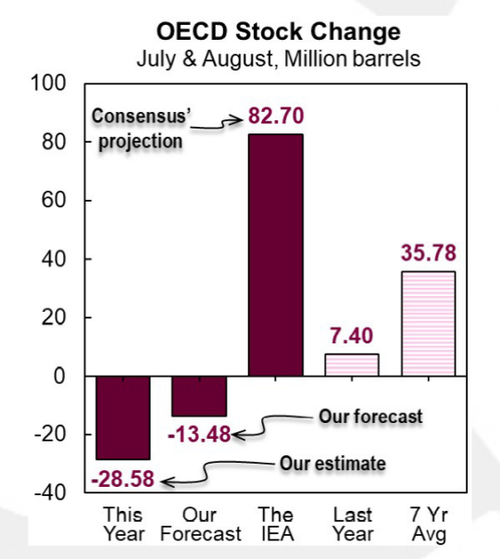
In
fact, despite oil prices pushing toward $80, total US crude output now
projected to actually decline this year. This is an unprecedented
development. However, as the very pro-renewables Financial Times (the
UK’s equivalent of the Wall Street Journal) explained in an August 11th,
2021, article: “Energy companies are in a bind. The old solution
would be to invest more in raising gas production. But with most
developed countries adopting plans to be ‘net zero’ on carbon emissions
by 2050 or earlier, the appetite for throwing billions at long-term gas
projects is diminished.”
The author, David Sheppard, went
on to opine: “In the oil industry there are those who think a period of
plus $100-a-barrel oil is on the horizon, as companies scale back
investments in future supplies, while demand is expected to keep rising
for most of this decade at a minimum.” (Emphasis mine) To which I say,
precisely!
Thus, if he’s right about rising demand, as I believe
he is, there is quite a collision looming between that reality and the
high probability of long-term constrained supplies. One of the most
relevant and fascinating Wall Street research reports I read as I was
researching the topic of what I have been referring to as “Greenflation”
is from Morgan Stanley. Its title asked the provocative question:
“With 64% of New Cars Now Electric, Why is Norway Still Using so Much
Oil?”
While almost two-thirds of Norway’s new vehicle
sales are EVs, a remarkable market share gain in just over a decade, the
number in the US is an ultra-modest 2%. Yet, per the Morgan Stanley
piece, despite this extraordinary push into EVs, oil consumption in
Norway has been stubbornly stable.
Coincidentally,
that’s been the experience of the overall developed world over the past
10 years, as well; petroleum consumption has largely flatlined. Where
demand hasn’t gone horizontal is in the developing world which includes
China. As you can see from the following Cornerstone Analytics chart,
China’s oil demand has vaulted by about 6 million barrels per day (bpd)
since 2010 while its domestic crude output has, if anything, slightly
contracted.
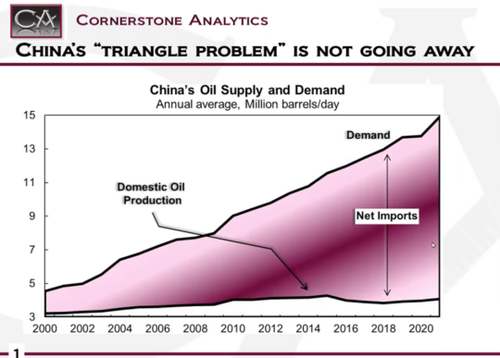
Another
coincidence is that this 6 million bpd surge in China’s appetite for
oil, almost exactly matched the increase in US oil production. Once
again, think where oil prices would be today without America’s shale oil
boom.
This is unlikely to change over the next decade. By 2031,
there are an estimated one billion Asian consumers moving up into the
middle class. History is clear that more income means more energy
consumption. Unquestionably, renewables will provide much of that power
but oil and natural gas are just as unquestionably going to play a
critical role. Underscoring that point, despite the exponential growth
of renewables over the last 10 years, every fossil fuel category has
seen increased usage.
Thus, even if China gets up to
Norway’s 64% EV market share of new car sales over the next decade, its
oil usage is likely to continue to swell. Please be aware that China
has become the world’s largest market for EVs—by far. Despite that, the
above chart vividly displays an immense increase in oil demand.
Here’s
a similar factoid that I ran in our December 4th EVA, “Totally Toxic”,
in which I made a strong bullish case for energy stocks (the main energy
ETF is up 35% from then, by the way):
“(There was) a
study by the UN and the US government based on the Model for the
Assessment of Greenhouse Gasses Induced Climate Change (MAGICC). The
model predicted that ‘the complete elimination of all fossil fuels in
the US immediately would only restrict any increase in world temperature
by less than one tenth of one degree Celsius by 2050, and by less than
one fifth of one degree Celsius by 2100.’ Say again? If the world’s
biggest carbon emitter on a per capita basis causes minimal improvement
by going cold turkey on fossil fuels, are we making the right moves by
allocating tens of trillions of dollars that we don’t have toward the
currently in-vogue green energy solutions?”
China's voracious power appetite increase has been true with all of its energy sources.
On
the environmentally-friendly front, that includes renewables; on the
environmentally-unfriendly side, it also includes coal. In 2020, China
added three times more coal-based power generation than all other
countries combined. This was the equivalent of an additional coal
planet each week. Globally, there was a reduction last year of 17
gigawatts in coal-fired power output; in China, the increase was 29.8
gigawatts, far more than offsetting the rest of the world’s progress in
reducing the dirtiest energy source. (A gigawatt can power a city with a
population of roughly 700,000.)
Overall, 70% of China’s
electricity is coal-generated. This has significant environmental
implications as far as electric vehicles (EVs) are concerned. Because
EVs are charged off a grid that is primarily coal- powered, carbon
emissions actually rise as the number of such vehicles proliferate. As
you can see in the following charts from Reuters’ energy expert John
Kemp, Asia’s coal-fired generation has risen drastically in the last 20
years, even as it has receded in the rest of the world. (The flattening
recently is almost certainly due to Covid, with a sharp upward
resumption nearly a given.)
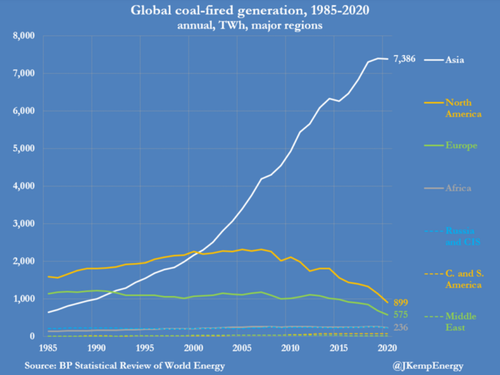
The
worst part is that burning coal not only emits CO2—which is not a
pollutant and is essential for life—it also releases vast quantities of
nitrous oxide (N20), especially on the scale of coal usage seen in Asia
today. N20 is unquestionably a pollutant and a greenhouse gas that is
hundreds of times more potent than CO2. (An interesting footnote is
that over the last 550 million years, there have been very few times
when the CO2 level has been as low, or lower, than it is today.)
Some
scientists believe that one reason for the shrinkage of Arctic sea ice
in recent decades is due to the prevailing winds blowing black carbon
soot over from Asia. This is a separate issue from N20 which is a
colorless gas. As the black soot covers the snow and ice fields in
Northern Canada, they become more absorbent of the sun’s radiation, thus
causing increased melting. (Source: “Weathering Climate Change” by
Hugh Ross)
Due to exploding energy needs in China this
year, coal prices have experienced an unprecedented surge. Despite this
stunning rise, Chinese authorities have instructed its power providers
to obtain coal, and other baseload energy sources, such as liquified
natural gas (LNG), regardless of cost. Notwithstanding how pricey coal
has become, its usage in China was up 15% in the first half of this year
vs the first half of 2019 (which was obviously not Covid impacted).
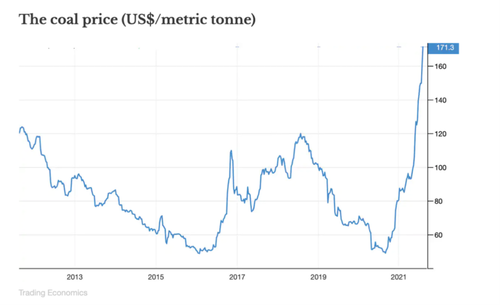
Despite
the polluting impact of heavy coal utilization, China is unlikely to
turn away from it due to its high energy density (unlike renewables),
its low cost (usually) and its abundance within its own borders (though
its demand is so great that it still needs to import vast amounts).
Regarding
oil, as we saw in last week’s final image, it is currently importing
roughly 11 million barrels per day (bpd) to satisfy its 15 million bpd
consumption (about 15% of total global demand). In other words, crude
imports amount to almost three-quarter of its needs. At $80 oil, this
totals $880 million per day or approximately $320 billion per year.
Imagine what China’s trade surplus would look like without its oil
import bill!
Ironically, given the current hostility between the
world’s superpowers, China has an affinity for US oil because of its
light and easy-to-refine nature. China’s refineries tend to be
low-grade and unable to efficiently process heavier grades of crude,
unlike the US refining complex which is highly sophisticated and prefers
heavy oil such as from Canada and Venezuela—back when the latter
actually produced oil.
Thus, China favors EVs because they can be de facto coal-powered, lessening its dangerous reliance on imported oil.
It also likes them due to the fact it controls 80% of the lithium ion
battery supply and 60% of the planet’s rare earth minerals, both of
which are essential to power EVs.
However, even for China,
mining enough lithium, cobalt, nickel, copper, aluminum and the other
essential minerals/metals to meet the ambitious goals of largely
electrifying new vehicle volumes is going to be extremely daunting.
This is in addition to mass construction of wind farms and enormously
expanded solar panel manufacturing.
As one of the planet’s leading energy authorities Daniel Yergin writes: “With
the move to electric cars, demand for critical minerals will skyrocket
(lithium up 4300%, cobalt and nickel up 2500%), with an electric vehicle
using 6 times more minerals than a conventional car and a wind turbine
using 9 times more minerals than a gas-fueled power plant. The
resources needed for the ‘mineral-intensive energy system’ of the future
are also highly concentrated in relatively few countries. Whereas the
top 3 oil producers in the world are responsible for about 30 percent of
total liquids production, the top 3 lithium producers control more than
80% of supply. China controls 60% of rare earths output needed for wind
towers; the Democratic Republic of the Congo, 70% of the cobalt
required for EV batteries.”
As many have noted, the
environmental impact of immensely ramping up the mining of these
materials is undoubtedly going to be severe. Michael Shellenberger, a
life-long environmental activist, has been particularly vociferous in
his condemnation of the dominant view that only renewables can solve the
global energy needs. He’s especially critical of how his fellow
environmentalists resorted to repetitive deception, in his view, to
undercut nuclear power in past decades. By leaving nuke energy out of
the solution set, he foresees a disastrous impact on the planet due to
the massive scale (he’d opine, impossibly massive) of resource mining
that needs to occur. (His book, “Apocalypse Never”, is also one I
highly recommend; like Dr. Koonin, he hails from the left end of the
political spectrum.)
Putting aside the environmental
ravages of developing rare earth minerals, when you have such high and
rapidly rising demand colliding with limited supply, prices are likely
to go vertical. This will be another inflationary “forcing”, a favorite
term of climate scientists, caused by the Great Green Energy
Transition.
Moreover, EVs are very semiconductor
intensive. With semis already in seriously short supply, this is going
to make a gnarly situation even gnarlier. It’s logical to expect that
there will be recurring shortages of chips over the next decade for this
reason alone (not to mention the acute need for semis as the “internet
of things” moves into primetime).
In several of the
newsletters I’ve written in recent years, I’ve pointed out the present
vulnerability of the US electric grid. Yet, it will be essential not
just to keep it from breaking down under its current load; it must be
drastically enhanced, a Herculean task. For one thing, it is
excruciatingly hard to install new power lines. As J.P. Morgan’s Michael
Cembalest has written: “Grid expansion can be a hornet’s nest of cost,
complexity and NIMBYism*, particularly in the US.” The grid’s frailty,
even under today’s demands (i.e., much less than what lies ahead as
millions of EVs plug into it) is particularly obvious in California.
However, severe winter weather in 2021 exposed the grid weakness even in
energy-rich Texas, which also has a generally welcoming attitude toward
infrastructure upgrading and expansion.
Yet it’s the
Golden State, home to 40 million Americans and the fifth largest economy
in the world, if it was its own country (which it occasionally acts
like it wants to be), that is leading the charge to EVs and seeking to
eliminate internal combustion engines (ICEs) as quickly as possible.
Even now, blackouts and brownouts are becoming increasingly common.
Seemingly convinced it must be a role model for the planet, it’s trying
desperately to reduce its emissions, which are less than 1%, of the
global total, at the expense of rendering its energy system more similar
to a developing country. In addition to very high electricity costs
per kilowatt hour (its mild climate helps offset those), it also has
gasoline prices that are 77% above the national average.
*NIMBY stands for Not In My Back Yard.
While
California has been a magnet for millions seeking a better life for 150
years, the cost of living is turning the tide the other way.
Unreliable and increasingly expensive energy is likely to intensify that
trend. Combined with home prices that are more than double the US
median–$800,000!–California is no longer the land of milk and honey,
unless, to slightly paraphrase Woody Guthrie about LA, even back in the
1940s, you’ve got a whole lot of scratch. More and more people, seem to
be scratching California off their list of livable venues.
Voters
in the reliably blue state of California may become extremely restive,
particularly as they look to Asia and see new coal plants being built at
a fever pitch. The data will become clear that as America keeps
decarbonizing–as it has done for 30 years mostly due to the displacement
of coal by gas in the US electrical system—Asia will continue to go the
other way. (By the way, electricity represents the largest share of
CO2 emission at roughly 25%.)
California has always
seemed to lead social trends in this country, as it is doing again with
its green energy transition. The objective is noble though, extremely
ambitious, especially the timeline. As it brings its power paradigm to
the rest of America, especially its frail grid, it will be interesting
to see how voters react in other states as the cost of power leaps
higher and its dependability heads lower. It’s reasonable to speculate
we may be on the verge of witnessing the Californication of the US
energy system.
Lest you think I’m being hyperbolic,
please be aware the IEA (International Energy Agency) has estimated it
will cost the planet $5 trillion per year to achieve Net Zero
emissions. This is compared to global GDP of roughly $85 trillion.
According to BloombergNEF, the price tag over 30 years, could be as high
as $173 trillion. Frankly, based on the history of gigantic cost
overruns on most government-sponsored major infrastructure projects, I’m
inclined to take the over—way over—on these estimates.
Moreover,
energy consulting firm T2 and Associates, has guesstimated electrifying
just the US to the extent necessary to eliminate the direct consumption
of fuel (i.e., gasoline, natural gas, coal, etc.) would cost between $18
trillion and $29 trillion. Again, taking into account how these
ambitious efforts have played out in the past, I suspect $29 trillion is
light. Regardless, even $18 trillion is a stunner, despite the reality
we have all gotten numb to numbers with trillions attached to them.
For perspective, the total, already terrifying, level of US federal debt
is $28 trillion.
Regardless, as noted last week, the
probabilities of the Great Green Energy Transition happening are
extremely high. Relatedly, I believe the likelihood of the Great
Greenflation is right up there with them.
As Gavekal’s
Didier Darcet wrote in mid-August: ““Nowadays, and this is a great
first in history, governments will commit considerable financial
resources they do not have in the extraction of very weakly concentrated
energy.” ( i.e., less efficient) “The bet is very risky, and if it
fails, what next? The modern economy would not withstand expensive
energy, or worse, lack of energy.”
While I agree this an
historical first, it’s definitely not great (with apologies for all the
“greats”). This is particularly not great for keeping inflation
subdued, as well as for attempting to break out of the growth quagmire
the Western world has been in for the last two decades. What we are
seeing in Europe right now is an extremely cautionary case study in just
how disastrous the war on fossil fuels can be (shortly we will see who
or what has been a behind-the-scenes participant in this conflict).
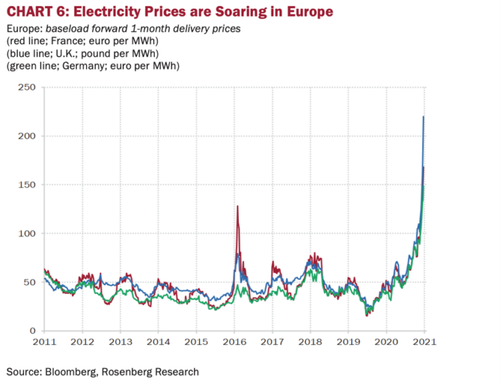
Essentially,
I believe, as I’ve written in past EVAs, we are entering the third
energy crisis of the last 50 years. If I’m right, it will be
characterized by recurring bouts of triple-digit oil prices in the years
to come. Along with Richard Nixon taking the US off the gold standard
in 1971, the high inflation of the 1970s was caused by the first two
energy crises (the 1973 Arab Oil Embargo and the 1979 Iranian
Revolution). If I’m correct about this being the third, it’s coming at a
most inopportune time with the US in hyper-MMT* mode.
Frankly,
I believe many in the corridors of power would like to see oil trade
into the $100s, and natural gas into the teens, as it will help catalyze
the shift to renewable energy. But consumers are likely to have a much
different reaction—potentially, a violently different reaction, as I
noted last week.
The experience of the Yellow Vest
protests in France (referring to the color of the vest protestors wore),
are instructive in this regard. France is a generally left-leaning
country. Despite that, a proposed fuel surtax in November 2018 to fund a
renewable energy transition triggered such widespread civil unrest that
French president Emmanuel Macron rescinded it the following month.
*MMT
stands for Modern Monetary Theory. It holds that a government, like
the US, which issues debt in its own currency can spend without concern
about budgetary constraints. If there are not enough buyers of its
bonds at acceptable interest rates, that nation’s central bank (the Fed,
in our case) simply acquires them with money it creates from its
digital printing press. This is what is happening today in the US.
Many economists consider this highly inflationary.
The sharp
and politically uncomfortable rise in US gas pump prices this summer
caused the Biden administration to plead with OPEC to lift its volume
quotas. The ironic implication of that exhortation was glaringly
obvious, as was the inefficiency and pollution consequences of shipping
oil thousands of miles across the Atlantic. (Oil tankers are a
significant source of emissions.) This is as opposed to utilizing
domestic oil output, as well as crude from Canada (which is actually
generally better suited to the US refining complex). Beyond the
pollution aspect, imported oil obviously worsens America’s massive trade
deficit (which would be far more massive without the six million
barrels per day of domestic oil volumes that the shale revolution has
provided) and costs our nation high-paying jobs.
Further,
one of my other big fears is that the West is engaging in unilateral
energy disarmament. Russia and China are likely the major beneficiaries
of this dangerous scenario. Per my earlier comment about a stealth
combatant in the war on fossil fuels, it may surprise you that a past
NATO Secretary General* has accused Russian intelligence of avidly
supporting the anti-fracking movements in Western Europe. Russian TV
has railed against fracking for years, even comparing it to pedophilia
(certainly, a most bizarre analogy!).
The success of the
anti-fracking movement on the Continent has essentially prevented a
European version of America’s shale miracles (the UK has the potential
to be a major shale gas producer). Consequently, the European Union’s
domestic natural gas production has been in a rapid decline phase for
years.
Banning fracking has, of course, made Europe heavily reliant on Russian gas shipments with more than 40% of its supplies coming from Russia. This
is in graphic contrast to the shale output boom in the US that has not
only made us natural gas self-sufficient but also an export powerhouse
of liquified natural gas (LNG).
In 2011, the Nord Stream system
of pipelines running under the Baltic Sea from northern Russia began
delivering gas west from northern Russia to the German coastal city of
Greifswald. For years, the Russians sought to build a parallel system
with the inventive name of Nord Stream 2. The US government opposed its
approval on security grounds but the Biden administration has dropped
its opposition. It now appears Nord Stream 2 will happen, leaving
Europe even more exposed to Russian coercion.
Is it
possible the Russian government and the Chinese Communist Party have
been secretly and aggressively supporting the anti-fossil fuel movements
in America? In my mind, it seems not only possible but probable. In
fact, I believe it is naïve not to come that conclusion. After all,
wouldn’t it be in both of their geopolitical interests to see the US
once again caught in a cycle of debilitating inflation, ensnared by the
twin traps of MMT and the third energy crisis?
*Per
former NATO Secretary General, Anders Fogh Rasumssen: Russia has
“engaged actively with so-called non-governmental
organizations—environmental organizations working against shale gas—to
maintain Europe’s dependence on imported Russian gas”.
Along
these lines, I was shocked to listen to a recent podcast by the New
Yorker magazine on the topic of “intelligent sabotage”. This segment
was an interview between the magazine’s David Remnick and a Swedish
professor, Adreas Malm. Mr. Malm is the author of a new book with the
literally explosive title “How To Blow Up A Pipeline”. Just as it
sounds, he advocates detonating pipelines to inhibit fossil fuel
distribution.
Mr. Remnick was clearly sympathetic to his
guest but he did ask him about the impact on the poor of driving energy
prices up drastically which would be the obvious ramification if his
sabotage recommendations were widely followed. Mr. Malm’s reaction was a
verbal shrug of the shoulders and words to the effect that this was the
price to pay to save the planet.
Frankly, I am appalled that the venerable New Yorker would
provide a platform for such a radical and unlawful suggestion. In an
era when people are de-platformed for often innocuous comments, it’s
incredible to me this was posted and has not been pulled down. In my
mind, this reflects just how tolerant the media is of attacks on the
fossil fuel industry, regardless of the deleterious impact on consumers
and the global economy.
Surely, there is a far better way
of coping with the harmful aspects of fossil fuel-based energy than this
scorched earth (literally, in the case of Mr. Malm) approach, which
includes efforts to block new pipelines, shut existing ones, and
severely restrict US energy production. In America’s case, the result
will be forcing us to unnecessarily and increasingly rely on overseas
imports. (For example, per the Wall Street Journal, drilling
permits on federal land have crashed to 171 in August from 671 in
April. Further, the contentious $3.5 trillion “infrastructure” plan
would raise royalties and fees high enough on US energy producers that
it would render them globally uncompetitive.)
Such
actions would only aggravate what is already a severe energy shock, one
that may be worse than the 1970s twin energy crises. America has it
easy compared to Europe, though, given current US policy trends, we
might be in their same heavily listing energy boat soon.
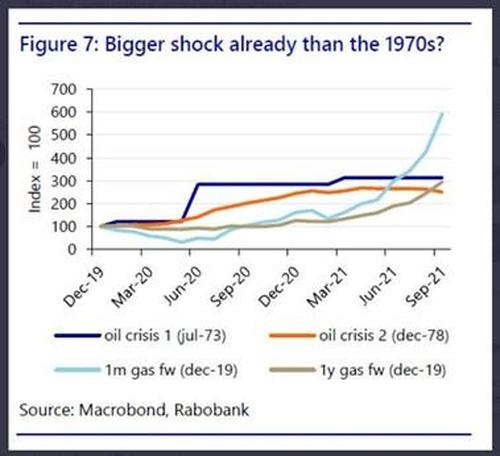
Solutions
include fast-tracking small modular nuclear plants; encouraging the
further switch from burning coal to natural gas (a trend that is,
unfortunately, going the other way now, as noted above); utilizing and
enhancing carbon and methane capture at the point of emission (including
improving tail pipe effluent-reduction technology); enhancing pipeline
integrity to inhibit methane leaks; among many other mitigation
techniques that recognize the reality the global economy will be reliant
on fossil fuels for many years, if not decades, to come.
If
the climate change movement fails to recognize the essential nature of
fossil fuels, it will almost certainly trigger a backlash that will
undermine the positive change it is trying to bring about. This is
similar to what it did via its relentless assault on nuclear power which
produced a frenzy of coal plant construction in the 1980s and 1990s.
On this point, it’s interesting to see how quickly Europe is
re-embracing coal power to alleviate the energy poverty and rationing
occurring over there right now - even before winter sets in. When the
choice is between supporting climate change initiatives on one hand and
being able to heat your home and provide for your family on the other,
is there really any doubt about which option the majority of voters will
select?










